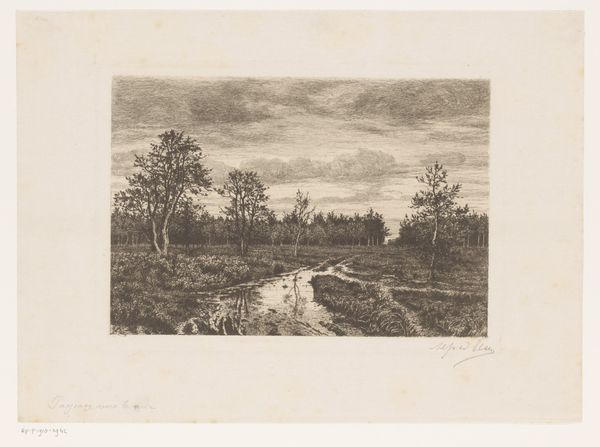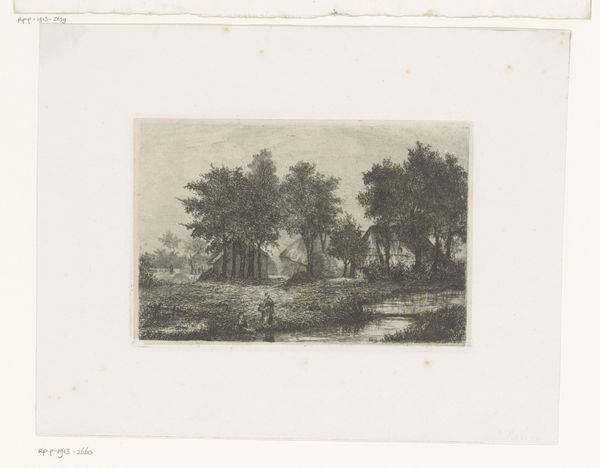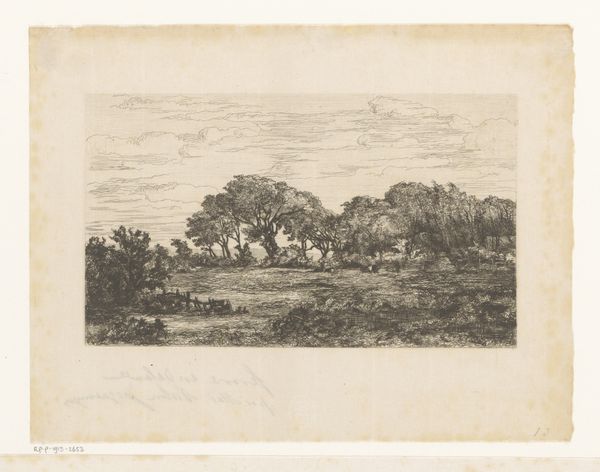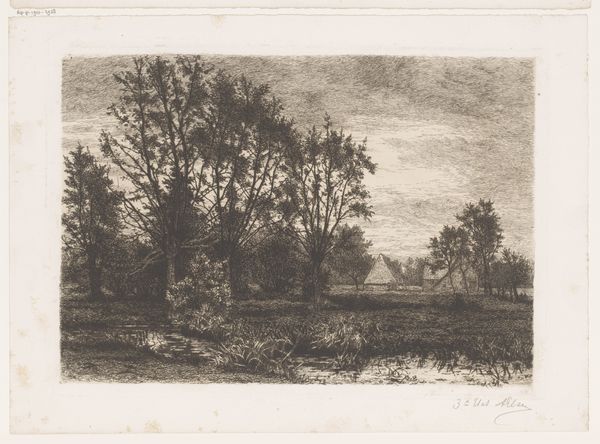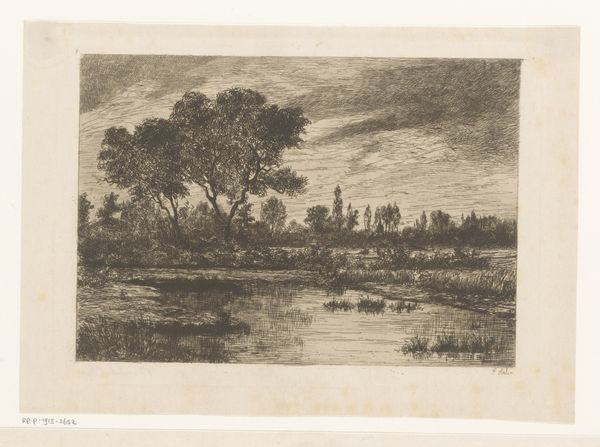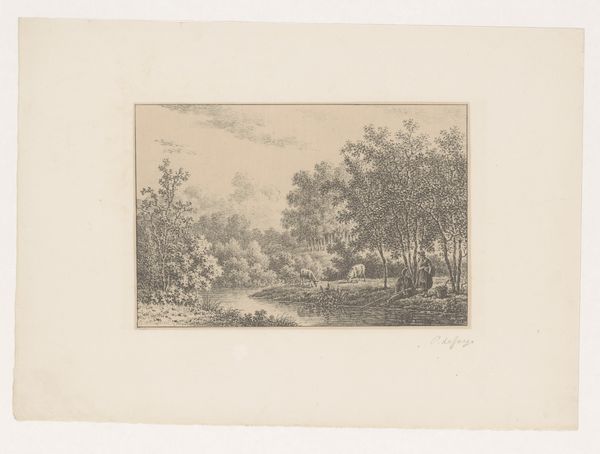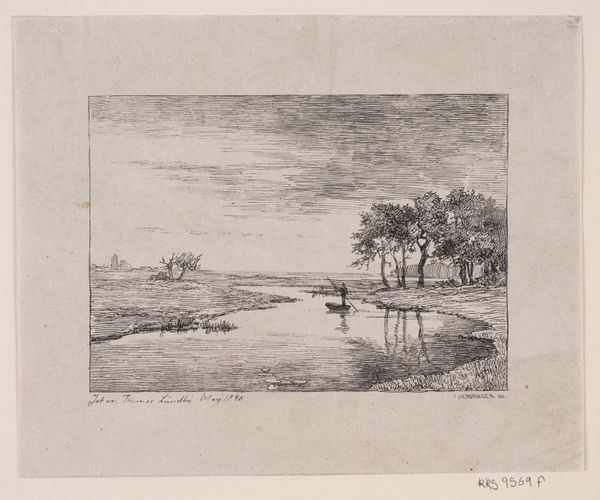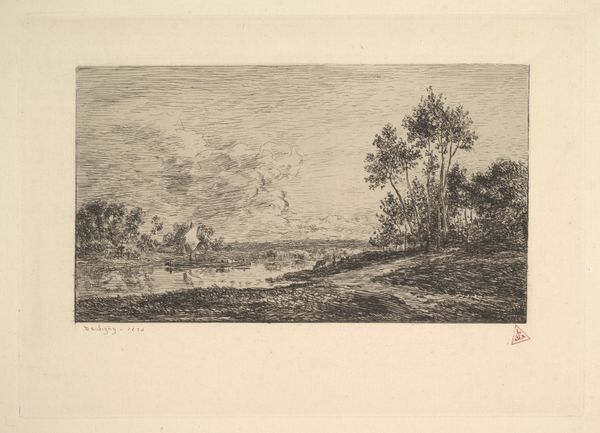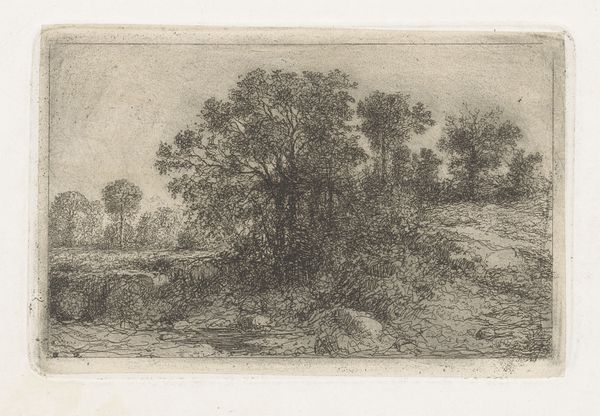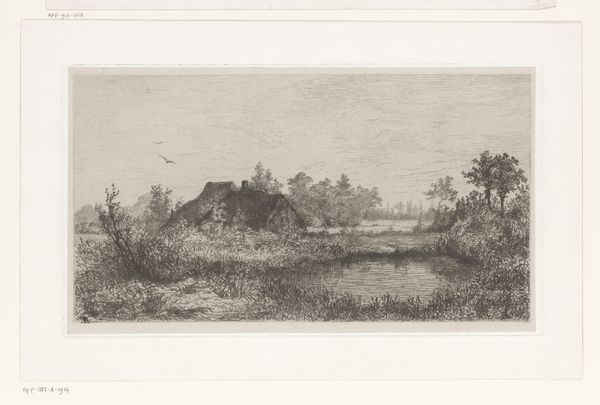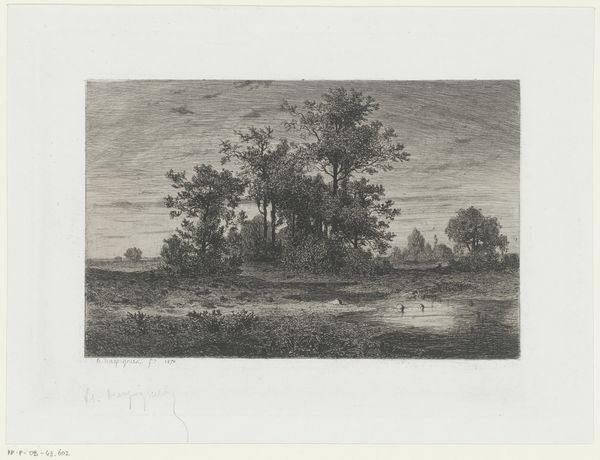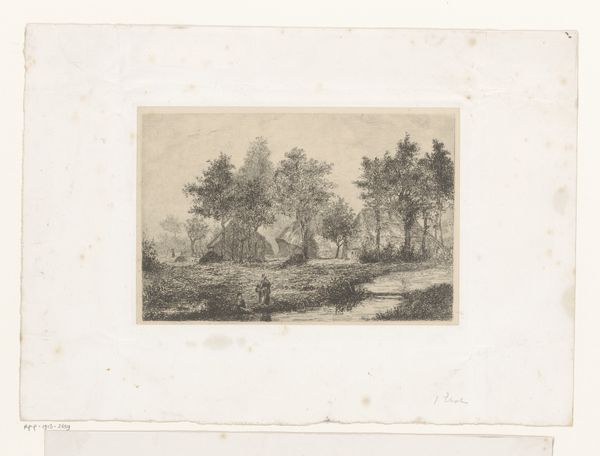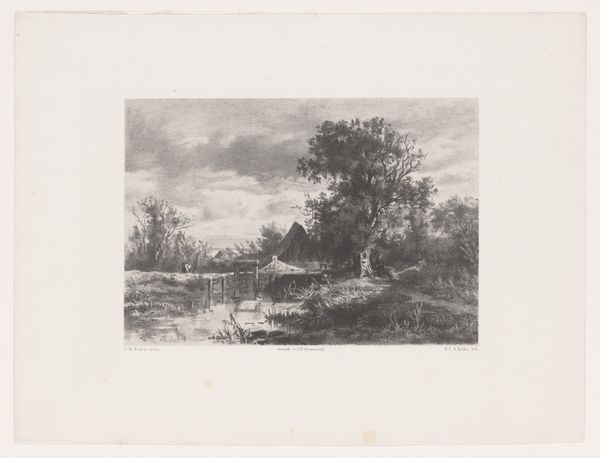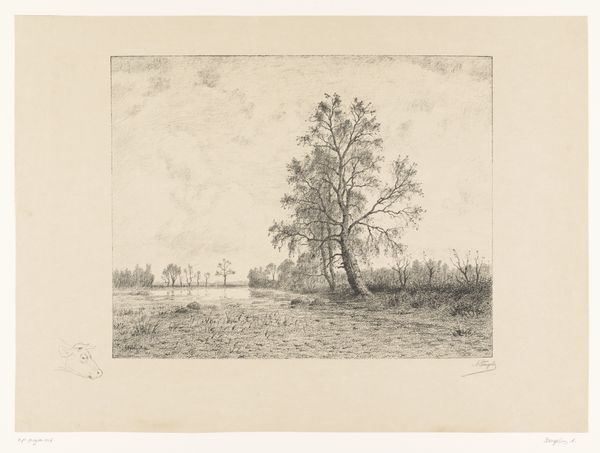
print, etching
# print
#
etching
#
landscape
#
realism
Dimensions: height 160 mm, width 236 mm
Copyright: Rijks Museum: Open Domain
Curator: I find myself strangely drawn to this subdued image; there's an almost melancholic feel to it. Editor: You’re responding to Alfred Elsen’s "Moeraslandschap met bomen," or "Marsh Landscape with Trees," an etching he probably made between 1860 and 1910, now housed here at the Rijksmuseum. I am immediately captivated by how still everything feels; as if the scene is holding its breath. Curator: Yes! Exactly! The trees almost look skeletal, reaching up from this still, dark water. It makes me think of those quiet, in-between places—twilight or those moments just before a storm breaks. I wonder what it meant for him to return again and again to landscape; were these private meditations? Editor: Landscape painting during this era becomes crucial as an expression of national identity, particularly in the wake of political upheaval. Think of Romanticism's focus on the sublimity of nature as a reaction to industrialization, and how artists used landscape to create a sense of rootedness and belonging in a rapidly changing world. So, maybe not so private at all. Curator: Ah, but the detail here is remarkable. The reflections in the water; the way he captures the light filtering through the branches... it feels very personal somehow. Almost like he’s communing with the landscape itself. Maybe it's wishful thinking to consider private acts as forms of gentle resistance... Editor: And yet we cannot ignore how the ownership and access to these landscapes were increasingly fraught with issues of class, labor, and enclosure. Art provided not just beauty, but served as silent records, either celebrating or overlooking injustices based on the artist's privilege. How do we reckon with this artist's personal 'communion' with land when we bring a lens of accessibility for all, or think about how that land could’ve been occupied? Curator: It’s a potent reminder that every brushstroke, every etched line carries its own weight of history. It does make me see it in a new light. So many whispers… Editor: It's the tension, right? Between the intimacy you sensed, and these wider social, economic currents flowing beneath. That's where the real power lies; the questions the work forces us to confront. Curator: I agree. I will never look at a “simple” landscape the same way again. Editor: Good. Maybe Elsen wouldn't want us to.
Comments
No comments
Be the first to comment and join the conversation on the ultimate creative platform.
